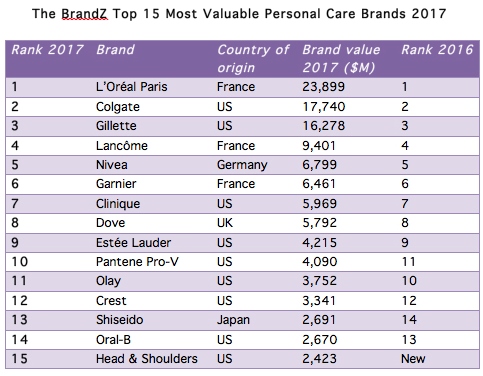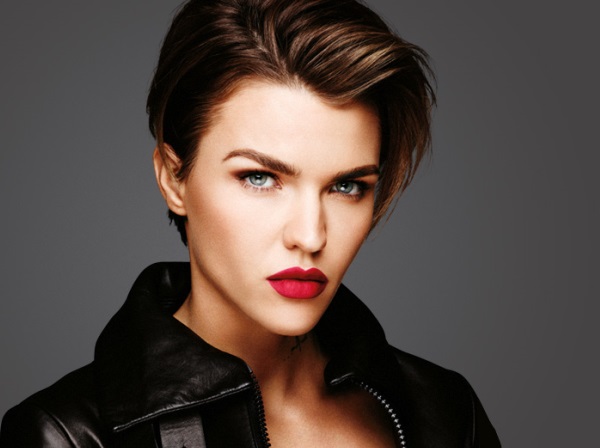L’Oréal Paris has been named the most valuable personal care brand – for the fifth consecutive year – in the 2017 BrandZ Top 100 Most Valuable Global Brands ranking
According to the ranking, L’Oréal Paris increased its brand value by two percent from last year to reach US$23.9 billion this year “following successful strategies to build loyalty and become more customer-centric”.
Lancôme (the fourth most valuable personal care brand on the list) and Shiseido (which moved from number 14 to number 13 on the ranking in the last 12 months) were the fastest risers, both increasing their value by 10 percent to reach US$9.4bn and US$2.7bn respectively.
According to Kantar Millward Brown, the marketing and brand consultancy which compiled the list, the total value of the Top 15 personal brands only increased one percent in the last year, as brands tackled challenges including disruption from new niche brands, currency fluctuations, and pressured margins owing to couponing and price promotion.

The consultancy identified five ways that personal care brands attempted to maintain/increase their marketshare:
Personalised products and customised advice: In a commoditised category with extensive choice, brands attempted to differentiate themselves by responding to more diverse needs and ideas of beauty with personalised products and customised advice. L’Oréal, for example, launched its True Match range of 33 foundations at the Golden Globe Awards.
Alignment with customers’ values. For example, The Strong is Beautiful campaign from Pantene Pro-V (+5%), featuring martial artist Ronda Rousey among others, continues to celebrate diversity and the idea that beauty is more than skin deep, while Shiseido reinforced its purpose and reputation as a brand that does right by its customers and its employees.
Targeting new audiences. Many brands sought to expand their reach by extending their appeal, diversifying into new sub-categories and targeting new audiences. For instance Lancôme, a classic brand generally preferred by an older audience, introduced Juicy Shaker lip gloss to appeal to younger women, while Gillette developed products aimed at the growing older consumer demographic.
Becoming more customer focused. As consumers became less brand-loyal, and social media became even more influential, beauty brands took steps to become more customer-focused. L’Oréal Paris, for example, teamed with five online beauty bloggers in the UK to form the L’Oréal Beauty Squad, with the aim of forging deeper connections.
Adopting technology. Brands used technology innovation to make consumers’ lives better and improve product accessibility. For example L’Oréal Paris and Lancôme both developed ways for consumers to buy directly from a mobile ad, blog or YouTube tutorial, for instance.
Nonetheless the consultancy concluded that the BrandZ Personal Care Top 15 are facing threats from innovative niche start-ups, such as Too Faced which are benefiting from people’s willingness to switch brands, and have the ability to move nimbly and meet expectations of greater personalisation.
“Local brands such as Boots No.7 (UK), Wardah (India), Avene (France), Fair and Lovely (India) and O Boticário (Brazil), along with retailers’ own brands, also pose a threat to global brands due to their precise understanding of local needs.”
The BrandZ Top 100 Most Valuable Global Brands report and rankings is available here.
Carried out by WPP’s marketing and brand consultancy Kantar Millward Brown, the BrandZTop 100 Most Valuable Global Brands ranking combines interviews with over three million consumers with analysis of the financial and business performance of each company (using data from Bloomberg and Kantar Worldpanel).

